While I was walking in our bush in August, so many plants seemed ready to burst into bloom.
This month, our wattles, which form such a beautiful background to our low shrubs and herbs, should be at their peak. Wattle flowers can be round, globular balls, or grow in cylindrical spikes. Two species with globular flower-heads, which are well into flowering, are Spreading Wattle Acacia genistifolia, with its stiff, narrow, spiky phyllodes, and Myrtle Wattle A. myrtifolia with short, rounded, leathery phyllodes.
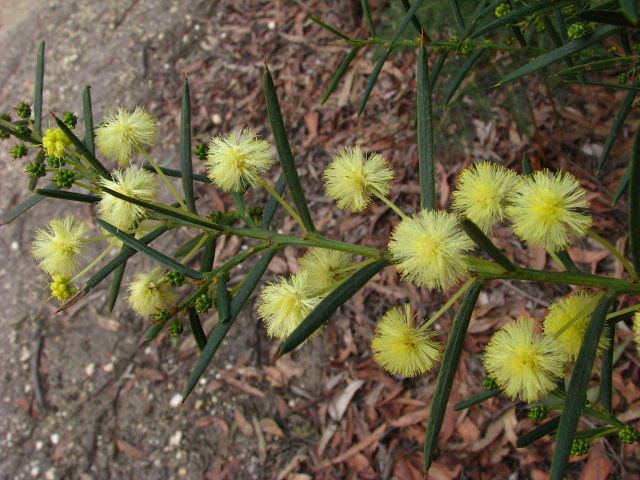
Spreading Wattle

Myrtle Wattle
Two wattles with flowers in cylindrical spikes are Narrow-leaf Wattle A. mucronata, with long narrow phyllodes ending in a sharp tip, and Spike Wattle A. oxycedris, with short, dagger-like phyllodes. I used to get the Spike Wattle and Spreading Wattle confused, but found that the different-shaped flower-heads were the easiest way to identify them.
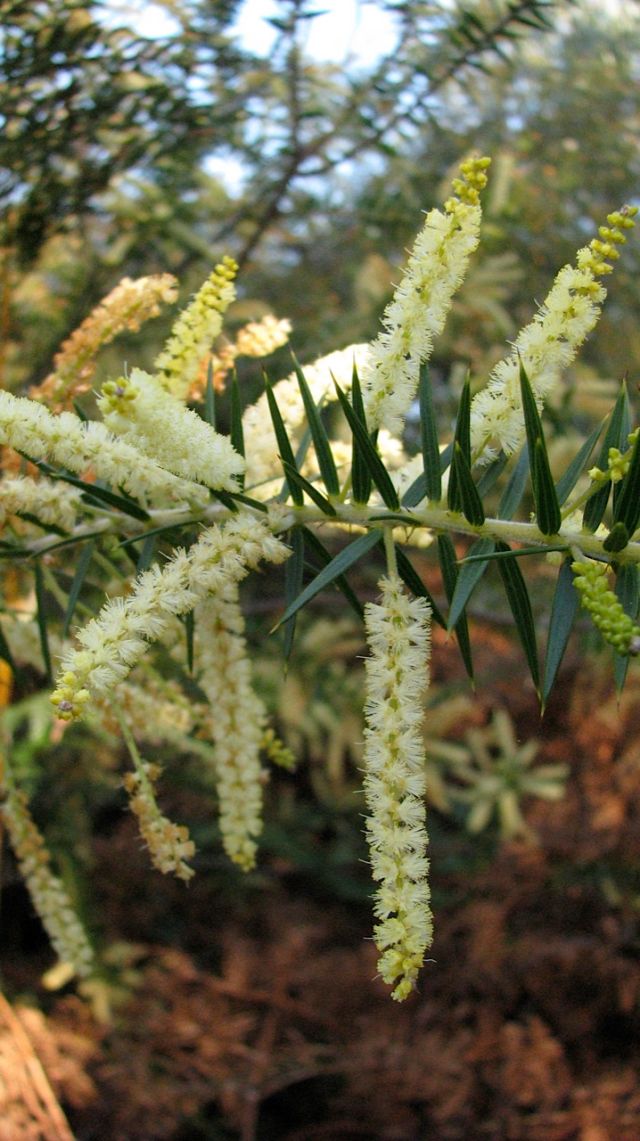
Spike Wattle
Some of our small, low-growing lilies are early spring favourites. We always hope for sun on our show walks, as plants, such as the delicate Blue Squill Chamaescilla corymbosa var. corymbosa, with rich blue flowers, carpet the ground in some of our reserves.

Blue Squill
Twining Fringe-lily Thysanotus patersoniia with its attractively fringed petals also need sun to open, and each flower lasts only one day.
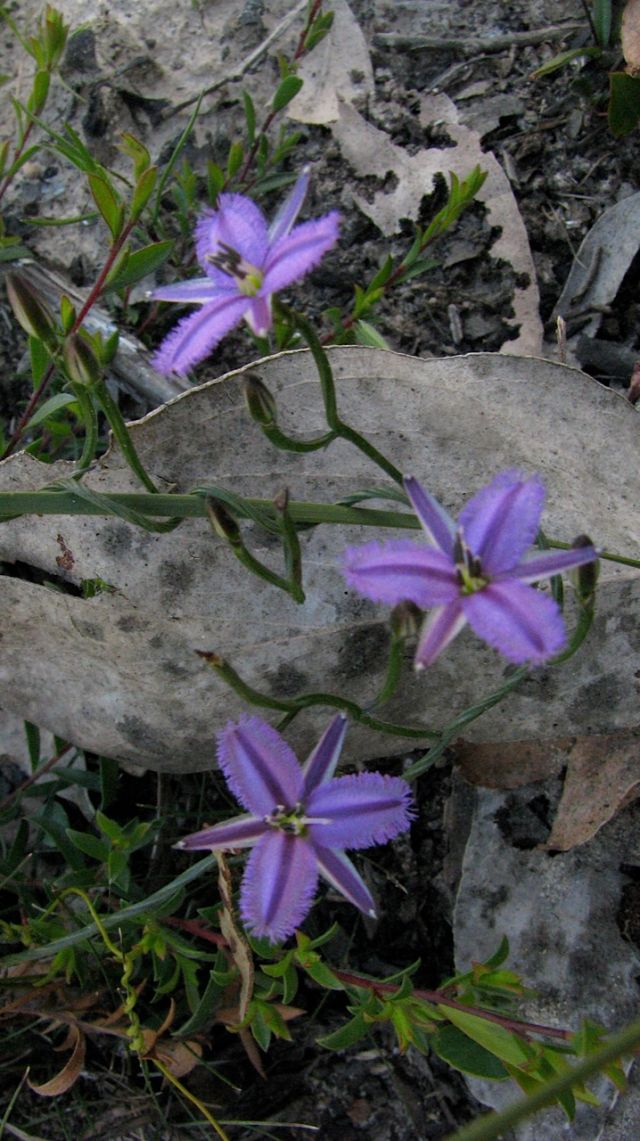
Twining Fringe-lily
Early Nancy Wurmbea dioica subsp. dioica is well named, as its pretty, white flowers are precursors of spring. These lilies are dioecious, which means that male and female flowers are on different plants. Last year at the lookout I found one plant with male and female flowers. I will be ‘on the lookout’ this year!

Early Nancy with female flower below male flower
Our peas, also known as egg and bacon plants, should be flowering in profusion, but they can be really confusing, as there is a multitude of pea genera. A favourite of mine, which unfortunately is often finished by the Show, is Leafless Bitter-pea Daviesia brevifolia. I consider this the Ugly Duckling of the plant world, because its unappealing, stiff, leafless branches spring into bloom with vivid apricot to salmon-pink flowers.

Leafless Bitter-pea
And who cannot but love the brilliant red flowers of Running Postman Kennedia prostrata. This plant is set to provide a colourful base to our other spring flowers, as it is a common ground cover in our district.
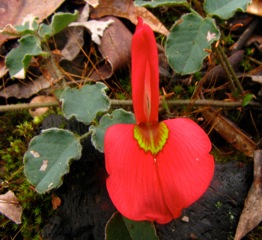
Running Postman
The Anglesea camp area is a good place to see and feel the delightful Soft Bush-pea Pultenaea mollis with its abundant yellow flowers and fine soft foliage.
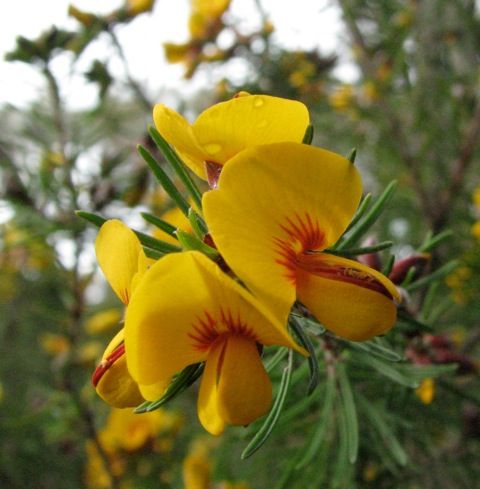
Soft Bush-pea
At Allen Noble Sanctuary, there are many, showy Rough Bush-pea Pultenea scabra, which have been planted there. It is one of the easiest peas to identify any time of year because of its small, heart-shaped leaves.

Rough Bush-pea
There are a whole host of other plants in flower to see, such as Daisies, Hibbertia and Goodenia, so you will really need your Flowers of Anglesea and Aireys Inlet on your walks – have fun!
Ellinor Campbell